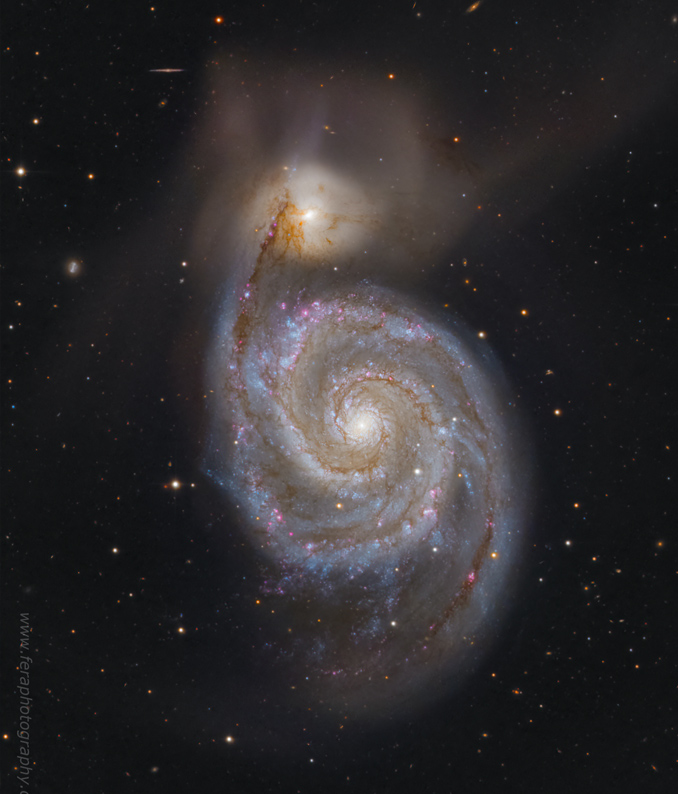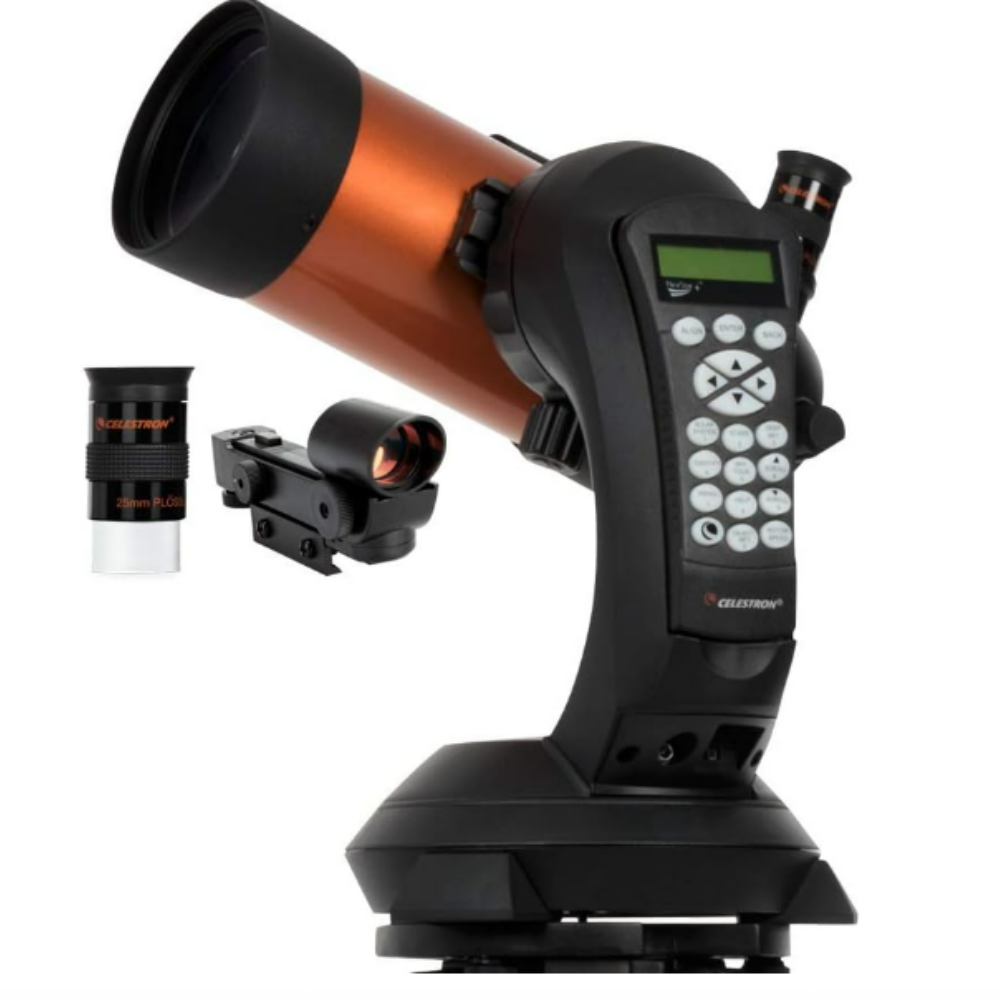Now Reading: Whirlpool Galaxy’s Legacy Inspires Astronomers and Amateurs Alike
-
01
Whirlpool Galaxy’s Legacy Inspires Astronomers and Amateurs Alike
Whirlpool Galaxy’s Legacy Inspires Astronomers and Amateurs Alike


The historical significance of Messier 51, commonly referred to as the Whirlpool Galaxy, is as vast and captivating as the galaxy itself. Discovered in 1773 by the renowned French astronomer Charles Messier, the Whirlpool Galaxy quickly became an object of fascination and study. At that time, astronomers were just beginning to comprehend the enormity of the universe and the nature of galaxies beyond our own Milky Way. Messier’s cataloging of this remarkable spiral galaxy not only contributed to the early understanding of the cosmos but also marked an era where observational astronomy began to flourish.
One of the most pivotal moments in the history of Messier 51 came during the 19th century when the brilliant Irish astronomer William Parsons, the Third Earl of Rosse, turned his colossal 72-inch telescope, the “Leviathan of Parsonstown,” towards the heavens. In 1845, he made detailed observations that crystallized our understanding of the galaxy’s intricate spiral structure. His astute observations depicted the iconic whirlpool formation that we recognize today, serving as a reference point for generations of astronomers. Parsons’ work was instrumental in affirming that galaxies are complex structures rather than mere nebulae, as they were commonly perceived at that time.
John Herschel, another giant in the field of astronomy, provided early insights into the galactic structure as well. In 1833, Herschel described the Whirlpool Galaxy as having “a very bright round nucleus surrounded at a distance by a nebulous ring,” a description that hinted at the spiral structure that Parsons would later confirm. The contributions from these early astronomers laid the groundwork for future exploration and understanding of galaxies, effectively ushering in a new chapter in astronomical studies.
Messier 51 holds a special place in the hearts of amateur astronomers and astrophotographers alike. The galaxy’s striking beauty makes it a perennial favorite in astrophotography and a frequent subject at star parties and astronomy festivals. Its prominent and well-defined spiral arms, illuminated by clusters of young, hot stars, provide an exceptional target for both observation and imaging. With advancements in telescope technology and imaging techniques, astrophotographers have been able to capture breathtaking images of the galaxy that reveal not only its intricate spiral arms but also the myriad of stars and celestial phenomena within and around it.
Moreover, the interactions between Messier 51 and its companion galaxy, NGC 5195, have sparked curiosity and numerous studies. These interactions serve as a real-time laboratory for understanding galaxy formation and evolution, and are a testament to the dynamic nature of the universe. The gravitational dance between the two galaxies has been the subject of numerous simulations and studies, providing invaluable insights into the life cycle of galaxies and the role of gravitational interactions in star formation.
As we continue to explore the cosmos, the Whirlpool Galaxy remains a beacon of scientific inquiry, inspiring both professionals and amateurs to look up and consider the mysteries held in the spiral arms of this magnificent galaxy. It serves as a reminder of how far we have come and the vastness of knowledge that still awaits us. Messier 51 is not just an object to observe; it is a historical milestone in our journey through the universe, one that continues to inspire generations of astronomers.
When setting out to observe Messier 51, or the Whirlpool Galaxy, it is essential to prepare adequately, ensuring you have the right tools and optimal conditions for viewing. Located in the constellation Canes Venatici, Messier 51 is best observed from dark sites with minimal light pollution. This celestial marvel shines at a magnitude of +8.1, making it visible through small telescopes and even binoculars under ideal conditions.
To begin your search for Messier 51, first locate Alkaid, the bright end star of the handle of the Big Dipper (Ursa Major). This star shines at magnitude +1.8 and serves as a reliable reference point. From Alkaid, take a two-degree sweep westward to find the star 24 Canum Venaticorum (magnitude +4.7). Then, head south-southwest for another two degrees to arrive at the Whirlpool’s location. Given that M51 is circumpolar from northern latitudes like the UK, it is visible throughout the year, but it culminates at its zenith around 2 A.M. BST in early May.
When observing M51, the key is to have conditions conducive to viewing faint objects. The spiral arms of the galaxy are of low surface brightness, which can make them challenging to detect, especially on nights affected by haze or moonlight. If you are observing from a suburban area, a small telescope may allow you to spot M51 as a faint smudge. However, if you’re fortunate enough to find yourself at a semi-rural site, a pair of 10 x 50 binoculars can reveal M51 as a small, hazy patch.
For those equipped with more substantial telescopes, the experience becomes even more rewarding. A telescope of 250mm (10-inch) or larger can reveal the spiral structure, granting viewers a closer look at this stunning galactic phenomenon. As you gaze upon Messier 51, you might notice its notable companion, NGC 5195, appearing as a small, bright spot nearby. The gravitational interaction between these two galaxies not only enhances their beauty but also ignites a fascinating story of cosmic dynamics. Over the past 70 million years, the approach of NGC 5195 has triggered waves of star formation within Messier 51, creating pockets of bright, young stars that punctuate the galaxy’s signature spiral arms.
For those keen on astrophotography, capturing the Whirlpool Galaxy presents an exhilarating challenge. Using long exposures with a DSLR or dedicated astrophotography camera on a tracking mount can yield stunning images of Messier 51. Amateur astronomers have shared breathtaking images that not only reveal the spiral arms but also showcase the cosmic dust lanes and the vibrant star clusters within. Timed exposures can further highlight the tidal tails formed by NGC 5195 as it interacts gravitationally with M51, adding an extra layer of intrigue to the images.
As you embark on your journey to observe the Whirlpool Galaxy, remember that patience is key. Variables such as atmospheric conditions, telescope setup, and local light pollution can all impact your viewing experience. Keep a log of your observations, noting different aspects of the galaxy each time you view it. Engaging with local astronomy clubs or online communities can also amplify your interaction, as seasoned observers can offer tips based on their own experiences with Messier 51.
Ultimately, observing Messier 51 is more than just viewing a distant galaxy; it’s a captivating encounter with the universe itself. Each observation brings forth the intricate beauty of cosmic dance, encouraging us to appreciate our place in the vast expanse of space.
Stay Informed With the Latest & Most Important News
Previous Post
Next Post
-
 012024 in Review: Highlights from NASA in Silicon Valley
012024 in Review: Highlights from NASA in Silicon Valley -
 02Panasonic Leica Summilux DG 15mm f/1.7 ASPH review
02Panasonic Leica Summilux DG 15mm f/1.7 ASPH review -
 03How New NASA, India Earth Satellite NISAR Will See Earth
03How New NASA, India Earth Satellite NISAR Will See Earth -
 04And Thus Begins A New Year For Life On Earth
04And Thus Begins A New Year For Life On Earth -
 05Astronomy Activation Ambassadors: A New Era
05Astronomy Activation Ambassadors: A New Era -
06SpaceX launch surge helps set new global launch record in 2024
-
 07Space Force plans new ‘Futures Command’ amid pressure to speed up modernization
07Space Force plans new ‘Futures Command’ amid pressure to speed up modernization



















